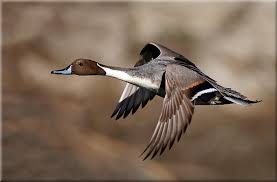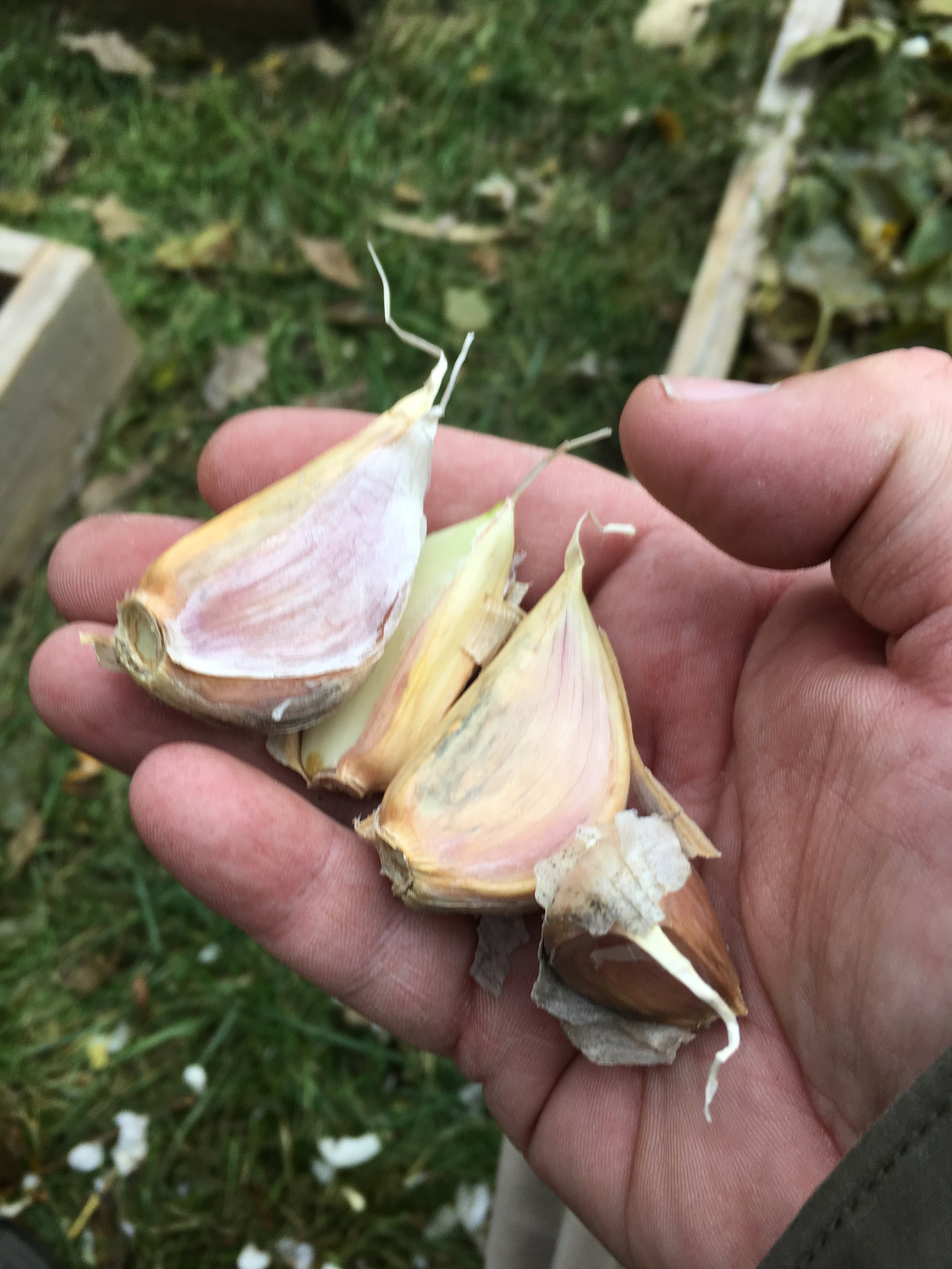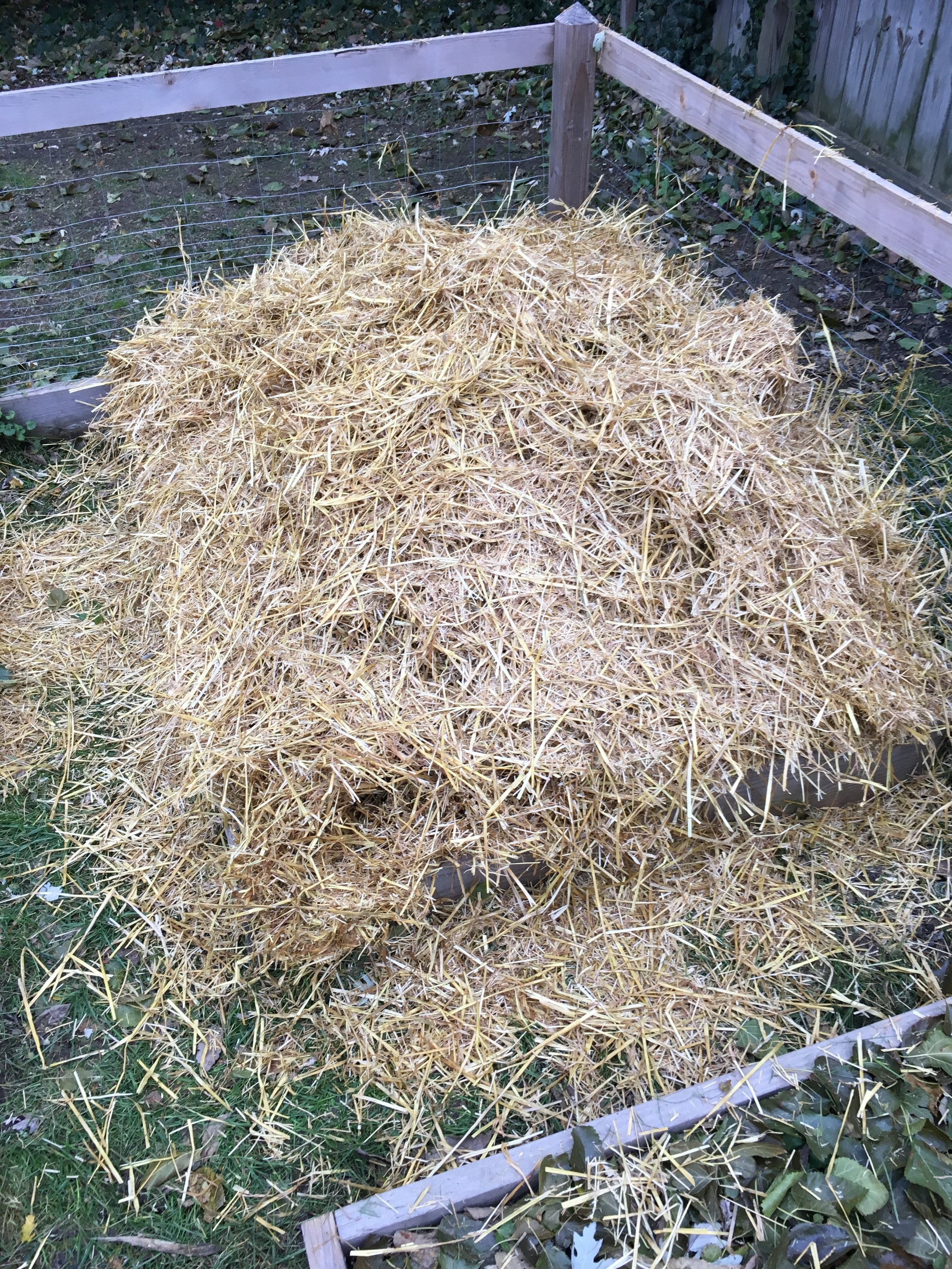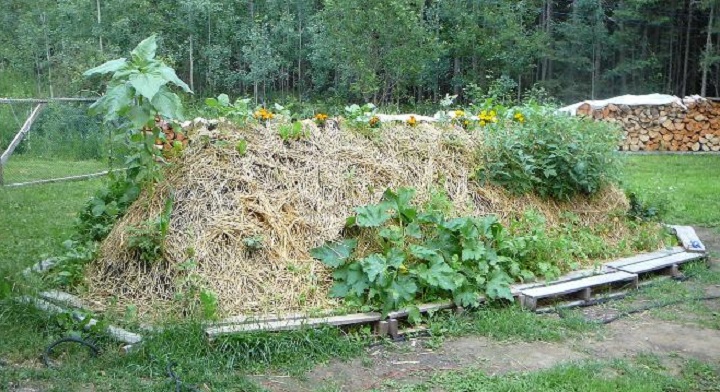Following my own advice from my most recent post regarding an end of year assessment, I started assessing my garden. To further this process, I looked at my offerings in the garden and determined what worked, and what didn’t. This year, I think it’s safe to say, I made many mistakes, some of which were largely of my own doing. The good news is that all of it can be easily corrected with minimal effort. Let’s see, there was:
- Too much shade in the new garden plot (rectified with a chainsaw)
- Too much water from the in-law’s irrigation system (rectified with controller changes)
- Mislabeled plants (rectified with the re-implementation of popsicle stick labels)
- Chipmunk and squirrel infestation destroyed anything directly sown resulting in a late replanting (rectified with bird netting until mature – approx. 2’ tall)
Item #1 was the result of setting the garden structure before foliage had returned. Several limbs and a few crap trees need to be removed for better sun exposure.
Item #2 was a foreseeable issue that wasn’t seen… if that makes sense. My father-in-law loves lush green grass and waters accordingly. That was far too much water for the garden and, thus, I had a lot of mold and disease problems. The garden is now on its own watering circuit with dedicated sprinkler heads that only I can control.
Item #3 was born out of vanity. I thought that because I’ve been growing pretty much the same things year in and year out I’d know what everything was as it sprouted. I was wrong. I didn’t bother labeling the pots as I started the seeds indoors and some serious head scratching took place as the plants matured and bore fruit. It was actually kind of funny, but needless to say I’ll be re-implementing my label practices.
Item #4 was the direct result of my in-laws and their panache for bird feeders. It seems that the chipmunks and squirrels have grown accustomed to having carte blanche on their property as they have no pets to speak of. As a result, they felt that the garden was in bounds and attacked my garden by either eating the tender sprouts or digging up all of the direct sown seeds. These were things like corn, bush beans, asparagus, Spanish onions, and potatoes. Oddly enough, they didn’t touch the carrots. This issue was resolved when I replanted and then draped those sections of the garden under bird netting. Unfortunately, these plants were re-seeded too late in the season. The corn only made it to about four feet tall by the end of the season.
As part of the assessment process, I also tend to review things I’ve previously written and/or researched looking for answers, explanations, or motivation. By looking to pieces I’ve already researched and written, it helps me stay focused on the task and reduces the amount of time it takes me to complete said assessment and planning tasks. In the case of the garden assessment and planning, I was looking at some of the research I did regarding orchards. In that white paper, which is available on the Resources/Research Downloads page, I stipulated that the Stark Bros website was my go-to resource for seedlings and general perfunctory knowledge for nut and fruit trees as well as berries. And for the record, I recommend both My Patriot Supply and Baker Creek Heirloom Seeds for non-GMO vegetable seeds.
Anyway, in addition to correcting the jackassery of my mistakes, I am going to try my hand at some berry bushes this coming year. This decision has me perusing the Stark Bros website once again. So far, I think I’ve decided on red raspberries and blue berries. I’d like to do blackberries, but there are several issues that need to be overcome before I can do those. Chief among them is the fact that they need to be planted > 75-100 yards away from the raspberries. Frankly speaking, I’m in an urban environment and the entirety of my lot isn’t that big. What I’m shooting for here with these berries is ease of maintenance and harvest. Thorns suck!
For the red raspberry, Stark Bros has a variety they are calling Bushel and Berry Raspberry Shortcake that seems like it checks all of the boxes in terms of maintenance and ease of harvest… I mean c’mon! It’s in a friggin’ pot!
As far as the blueberries go, I figured since I was going to implement a container raspberry I might as well try and do the same for the blueberry. And wouldn’t you know it… Stark Bros had one of those too. The variety I selected is called the Northblue Blueberry, but even though they said I didn't necessarily need one, they did recommend planting a pollinator called a Northcountry Blueberry. Unfortunately, their website didn’t have a nice picture to show you, but I did find this to serve my purposes here:
While I was searching for a good picture of a blueberry bush in a pot, I did come across a website called the Preparedness Mama that had a post relating to container blueberries. Here’s the link to that: 5 Tips to Grow Blueberries in Pots.
Planting, or growing, berries in general has now caused a ripple effect. Now I’ll have to deal with birds picking off my harvest as it ripens. I wouldn’t be me if I didn’t do something that resulted in the generation of a secondary or tertiary problem that required solving. How do you keep the birds off the berry plants once the fruit starts to ripen? Well, with bird netting of course!
At first, I drew this to try and explain my thought process as whatever I implement has to be able to be removed so I can get to the berries, but not the birds:
Pretty crude but you get the general idea. Then I figured there had to be something online where someone has already solved my berry thief problem. Sure enough, I found something in fairly short order:
Pretty creative options I think.
At the end of the day, I’ve assessed the 2017 garden and planned for the 2018 garden. Easy peesy! Now I can check those two tasks off my task list for January…




































